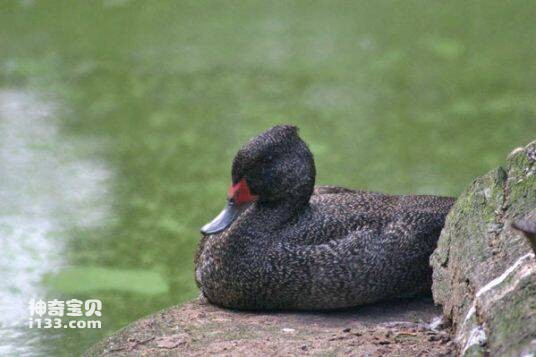Stictonetta naevosa
IUCN
LCBasic Information
Scientific classification
- name:Stictonetta naevosa
- Scientific Name:Stictonetta naevosa,Freckled Duck,Canvasback,Oatmeal Duck,Speckled Duck, Diamantina Duck
- Outline:Waterfowl
- Family:
Vital signs
- length:About 54 cm
- Weight:No textual research information is available
- lifetime:No textual research information is available
Feature
The feature most easily distinguished from other ducks is the large head with a crest
Distribution and Habitat
It is confined to the southwestern and inland waters of Australia. The conditions of Australia's inland waters are unstable, and many waters will disappear due to drought. This phenomenon is especially serious after human development of agriculture and animal husbandry, and the survival of the Australian spotted duck has also been greatly affected.
Creeks, densely wooded forests inhawing fresh water swamps, dense rushes or tea vegetation.
Appearance
At 54 cm long, the Australian spotted duck is a medium sized water duck, most easily distinguished from other ducks by its large head with a crest. The plumage is dark brown with white or light brown spots. It has an upturned iron-gray beak. During the breeding season, the bill base of the male duck turns red.
Details
Australian spotted duck (Stictonetta naevosa; Freckled Duck, Canvasback, Oatmeal Duck, Speckled Duck, Diamantina Duck) is a type between ducks and geese, its relative and other duck geese are relatively distant, is the only species in the genus.

Australian spotted ducks can delay breeding during dry periods when they are short of water. Feeds on algae, seeds, grasses, sedges, and small invertebrates.
The Australian spotted duck nests near water sources, and the nest material is generally woven with branches and the lining of the Zhou duck down. Each nest lays 5 to 15 eggs. The breeding season occurs in the Ballou and Lake Eyre basins, in large, temporary swampy areas caused by the floods of the Meredaling system.
Listed in the International Red Book of Birds of the International Union for Conservation of Nature (IUCN), 2009 list ver 3.1.
Protect wild animals and eliminate wild meat.
Maintaining ecological balance is everyone's responsibility!








